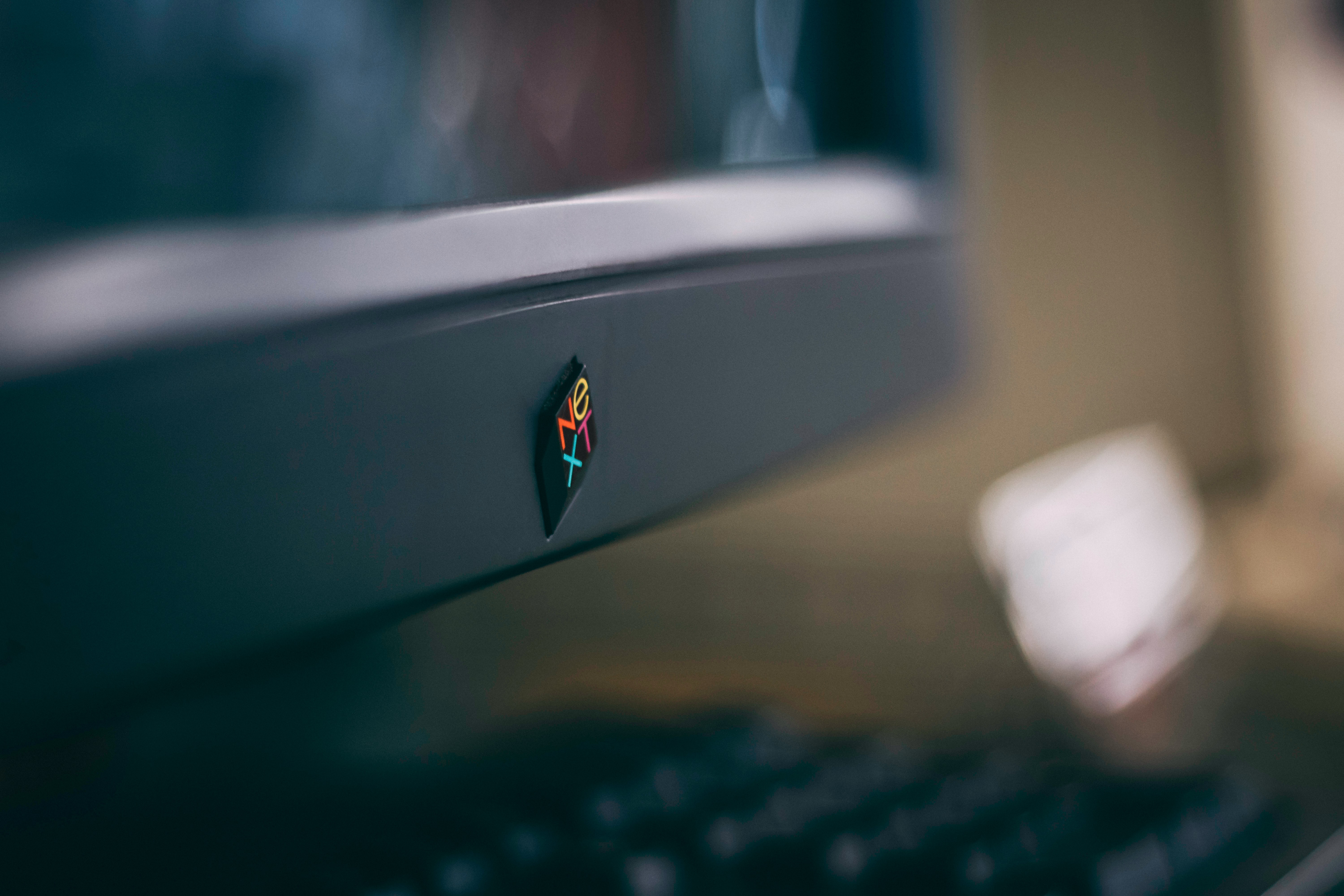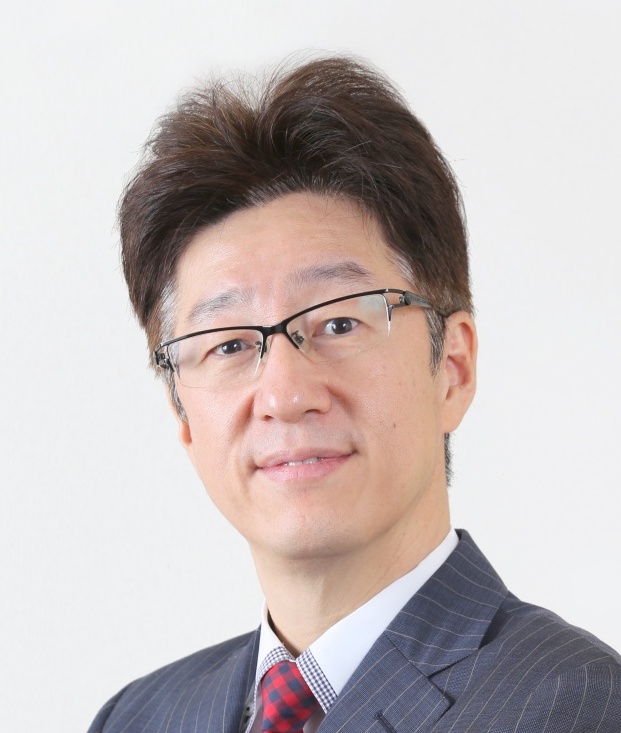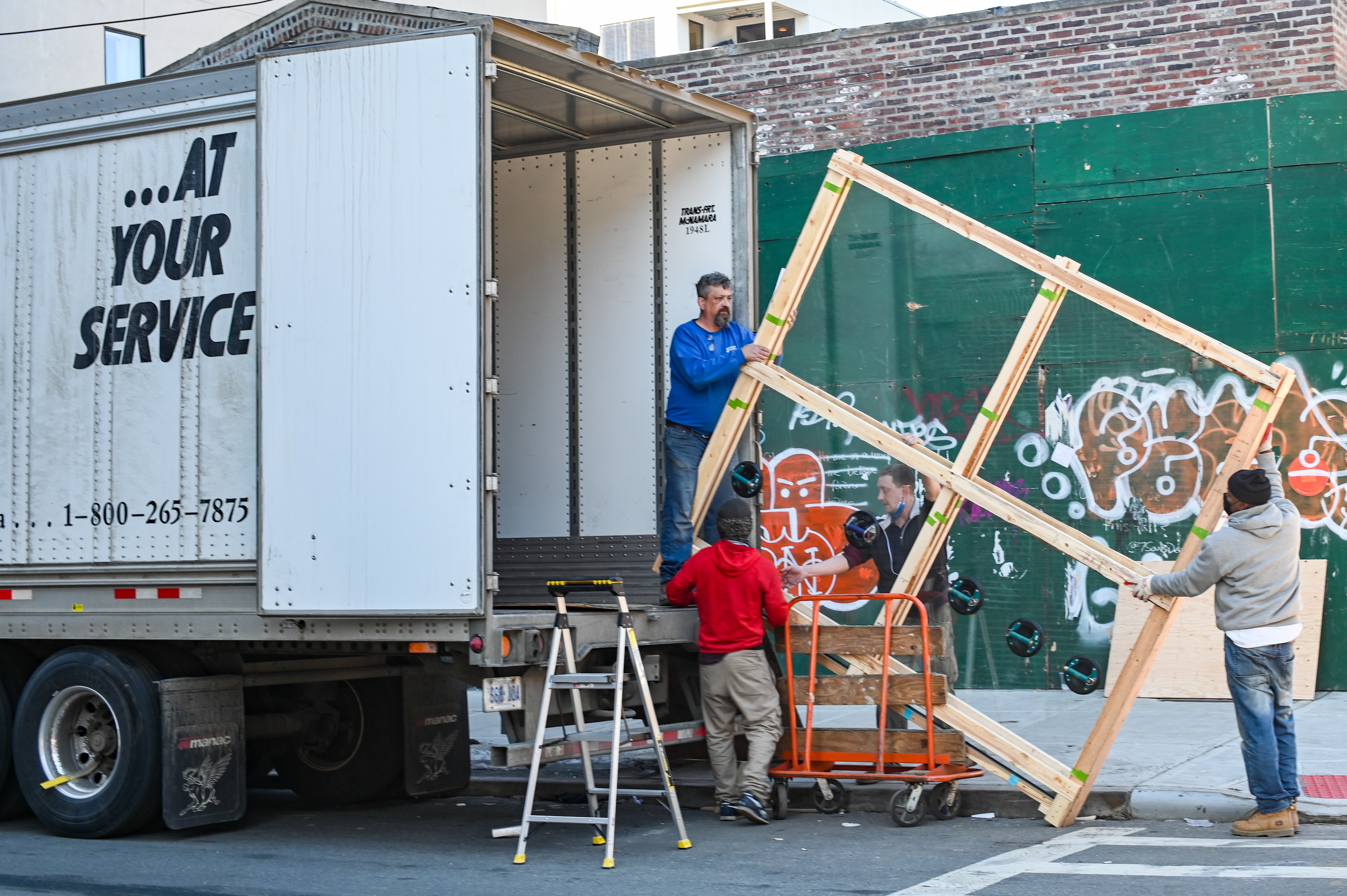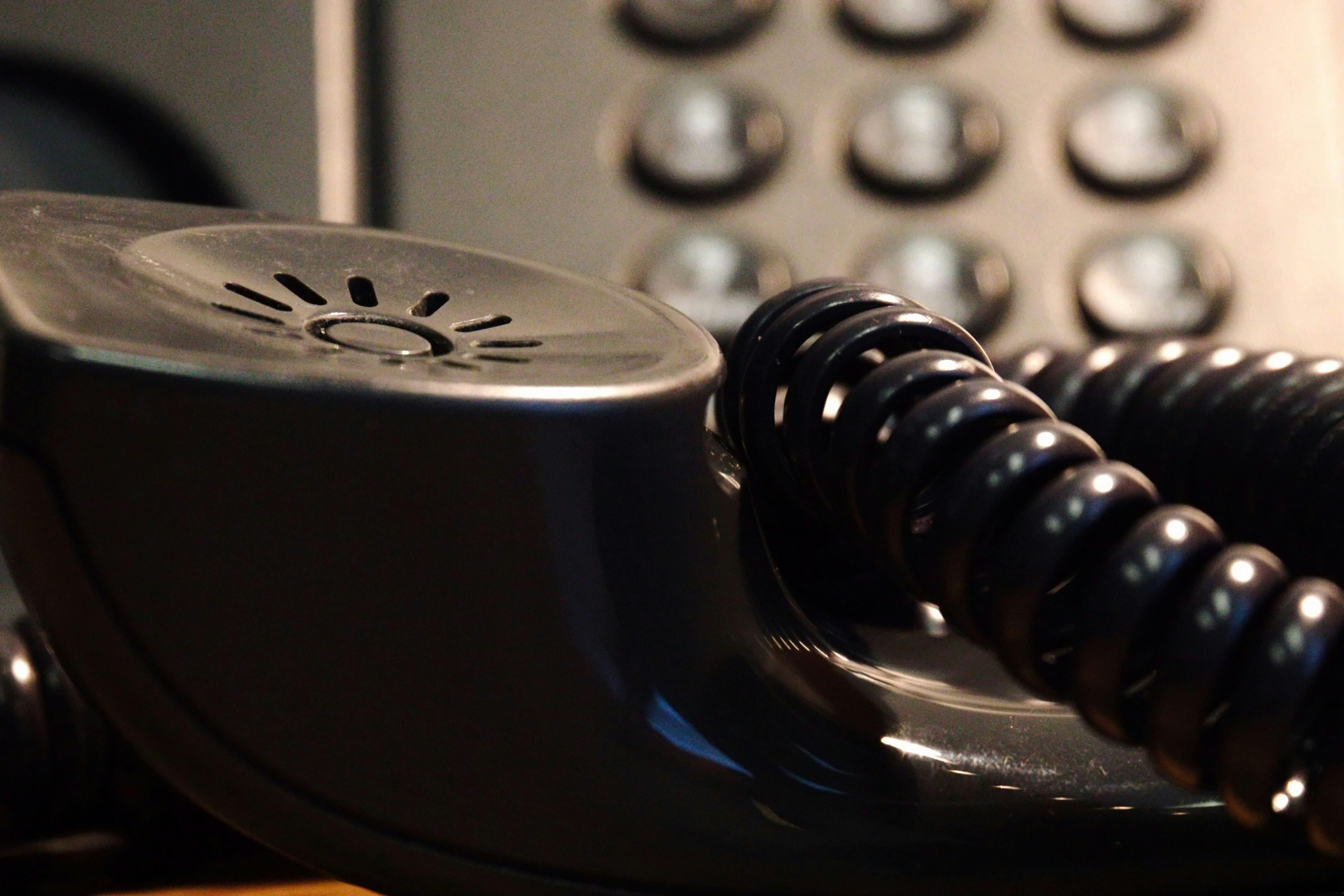How I met with NeXT Computer
When I was working for Tokyo Electric Power Company, the department I belonged to happened to have a NeXT Computer for research purposes. It was the first-generation NeXT Cube.
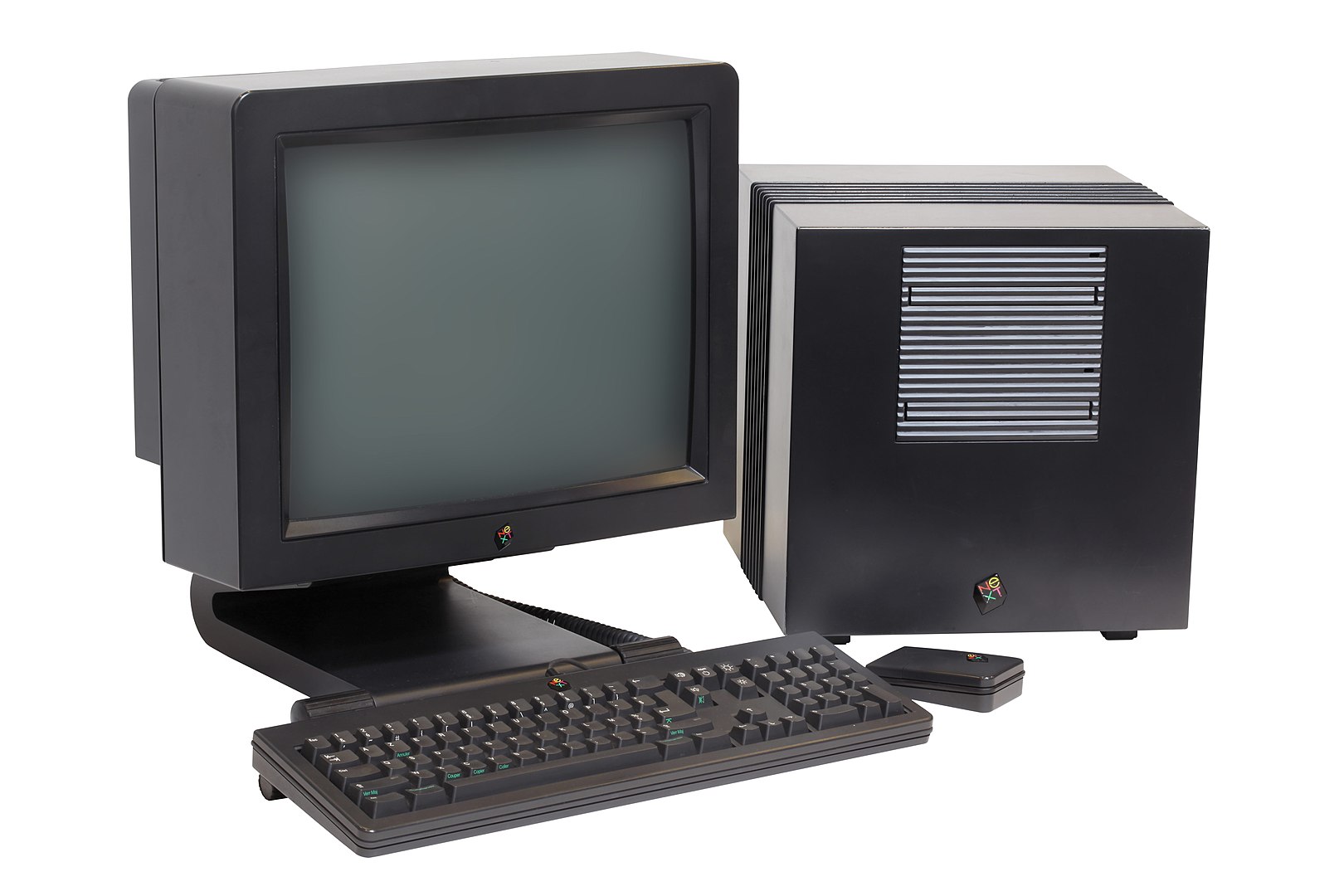 NeXTcube. (2022, December 10). In Wikipedia. https://ja.wikipedia.org/wiki/NeXTcube
NeXTcube. (2022, December 10). In Wikipedia. https://ja.wikipedia.org/wiki/NeXTcube
Until then, I knew UNIX as a theoretical study, but I had hardly ever worked directly with UNIX. NeXT was essentially the first UNIX machine I had ever touched. It was indeed a shocking encounter. The kernel was Mach, and the window system was Display PostScript instead of X-Window, the mainstream in UNIX. The hardware had DSP and MO (magneto-optical disk) equipped, which were rare back then, and the chassis was beautifully designed. That said, what surprised me the most was the Interface Builder. Today, Xcode on MacOS has taken over Interface Builder, and I think many people must have had a chance to use it. So, what was so amazing? At that time, I couldn’t intuitively understand how it was possible to test U/I without compiling or linking in a compiled language like Objective-C. It was as if I saw magic. There is a video of Steve Jobs giving such a magical demo of Interface Builder on NeXT, so please check it out!
The magical demo of Interface Builder by Steve Jobs
Getting my NeXT Station
Mostly because I got fascinated by NeXT, I began to admire significantly Carnegie Mellon University (CMU), where Mach Operating System was born. Thus, when I decided to study abroad, CMU became my first choice of university. Fortunately, I was allowed to attend my first-choice school and lived in Pittsburgh from 1992 to 1995.
Given that the kernel of NeXT was developed at CMU, the relationship between NeXT Computer and CMU was so strong. There were many NeXT Computers installed on campus (of course, there were also many other workstations, such as DEC, Sun, HP, and Omron. However, the OS of the machines in the Computer Science department was almost entirely Mach). Therefore, I had plenty of opportunities to play with NeXT Computer on campus, but my desire to own my own NeXT Computer gradually grew more and more. Many American universities sell computers to students at a significant discount, and CMU was no exception. Fortunately, CMU was selling NeXT Computers to students in addition to IBM-PC compatible and Mac. I could hardly resist taking advantage of this privilege as a student, and just before returning to Japan, I purchased my longing NeXT Computer at a student discount. However, I bought not a NeXT Cube but a pizza-box-style NeXT Station. There was also a color display model called NeXT Station Color, but it was a bit too expensive for me to afford, so I bought a monochrome model of NeXT Station. I don’t remember the exact price, but I think it was around $2,000 to $3,000. It was a little more expensive than the price of a PC at that time, but the market price of NeXT at that time (especially in Japan) was much higher, so I felt that I had made a pretty good deal.
Hibernation and Awakening
As described above, I finally obtained the coveted NeXT Computer for my use. After returning to Japan, I played with it at home occasionally. However, as my children grew up and began to make mischief with anything they were interested in, including NeXT Computer, it became challenging to keep NeXT at home. So, I decided to evacuate NeXT to my parents’ house temporarily. Thus, it stayed in the loft of my parent’s house, and time passed in the blink of an eye, and it remained there for about 20 years.
However, both of my parents passed away, and last year, I had to demolish the parents’ house, so I brought NeXT back home again. When I tried to boot it up after 20 years since it booted last time, I was surprised to find that it booted up like a charm, and all the applications on it worked too! Not only the Interface Builder but also Lotus Improv, a novel (in my opinion) spreadsheet, TopDraw, a drawing software similar to Illustrator, and the demo programs I was building all worked perfectly, and it was amazing! Furthermore, I opened up an email software that comes with NeXT, called NeXT Mail, a MIME-based multimedia email that was quite advanced at the time, and I found an email with Steve Jobs’ signature in the mailbox. Of course, it wasn’t sent to me personally; instead, it was a mail that came with NeXT Mail from the beginning, but it still made me feel emotional.
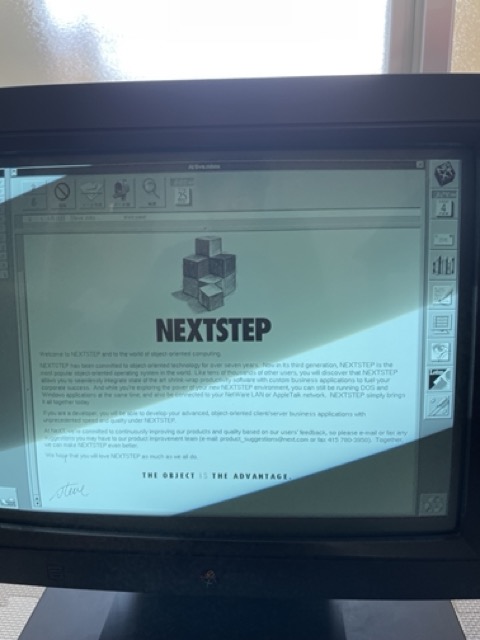
A signed email from Steve Jobs found in NeXT Mail.
Exploring a second life of my NeXT Station
I wish I could continue using my NeXT Station at home. However, the reality is that my room is already quite cramped with so much lab equipment taking up space that it was hard to carve out additional space for my NeXT Computer.
So, I tweeted on Twitter asking for ideas on what I should do with this beloved NeXT Station.
A tweet seeking ideas for my beloved NeXT Computer
To my surprise, I received many feedbacks and suggestions, including comments like “Oh, what a reminiscence!”, “You should donate it to a museum,” “I would love to use it personally,” and so on. I even received an enthusiastic message from someone overseas saying, “I would love to take care of it!”
NeXT Station settles at the Museum
After considering various options, I concluded that the best way to ensure that my NeXT Computer is put to good use and enjoyed by many would be to donate it to a museum. Among several facilities, I chose Personal Computer Museum in Ome City (western portion of Tokyo) as they committed to displaying my NeXT Station and allowing visitors to touch and play with it as long as it works. I encourage anyone interested to visit the museum in Ome. Please note that the museum plans to relocate and expand in April 2023, and my NeXT Station will not be exhibited until around July. I can hardly wait to see my NeXT Station at the museum. In any case, I am so happy to have found a perfect second home for my beloved NeXT Computer!
Photo by Serhii Butenko on Unsplash
